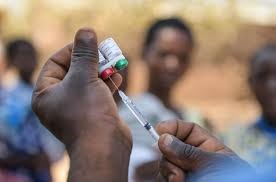
Malaria is one of the oldest health hazards to human beings. Despite the efforts to control it, throughout history it has remained the most challenging public health threat to the world. As a result, the efforts to control malaria are observed every year with specific themes.
This year’s theme, “Harness innovation to reduce the malaria disease burden and save lives” This signifies the need to scale up innovative efforts to address the longstanding illness that has been hugely affecting the socio-economic progress of the human society especially developing countries.
Some statistics show that Africa is home to 92 per cent of malaria cases and 93 per cent of malaria-related deaths in the world. The epidemic is also one of the leading causes of death in children under 5, taking the life of a child practically every 2 minutes.
According to World vision, nearly half of the world’s population, more than 3 billion people, is at risk of contracting malaria. Each year, there are around 200 million cases, and about half a million people die.
Currently, more than 50 per cent of the population in Ethiopia is exposed to the risk of malaria infection, Frontiersin.org indicates. Despite the range of prevention measures undertaken in the last two decades, malaria remains to be one of the top ten causes of morbidity and mortality in Ethiopia with substantial repercussions for the macro economy.
Ethiopia is one of the most vulnerable countries of the continent for malaria. Malaria transmission in Ethiopia is seasonal, unstable, and often characterized by highly focal and large-scale cyclic epidemics. Areas lying at altitudes between 1600 and 2000 meters above sea level (masl) are in general epidemic prone hypo-endemic zones of malaria although some studies could also detect malaria in areas higher than 2000 masl.
Altitude, climate, environmental changes (e.g., due to dams, roads construction, agricultural projects), and housing conditions are important determinants of malaria risk and transmission in Ethiopia.
In addition to the severity of the disease, the prevention efforts were stalled by the global pandemic COVID 19 during the last two years. Yet some encouraging results were observed recently, according to Matshidiso Moeti, WHO Africa Regional Director. “The past year has seen significant breakthroughs in malaria prevention and control, in spite of the COVID-19 pandemic.”
Landmark recommendations on the use of the first vaccine against malaria – RTS, S – were released by the World Health Organization late last year. This vaccine will be used to prevent malaria among children aged six months to five years, who live in moderate- to high transmission settings, Moeti indicated.
While this is a groundbreaking advance in the development of new tools to fight this disease, with the potential to save millions of lives, supplies are currently limited. As such, it is important to ensure that the doses that are available are utilized for maximum impact, while ensuring continued availability of other preventive measures to those most at risk.
For example, seasonal malaria chemoprevention (SMC) campaigns were implemented as planned in 2021, ensuring protection for an additional 11.8 million children. Indoor residual spraying was also carried out, and long-lasting insecticidal nets distributed, largely as planned. Other notable achievements include the scaled implementation of RTS, S vaccine pilots in Ghana, Kenya and Malawi, which reached up to 900,000 children. The ultimate goal is to reduce the number of people catching and dying from malaria.
In this regard, varying levels of progresses are observed in various countries of Africa. For example, Frontiersin.org elaborates that Ethiopia has been undertaking a wide range of policy measures to control malaria, especially, after 2004. Consequently, mortality and morbidity attributable to malaria have declined significantly. To keep the momentum of fighting malaria, however, Ethiopia needs to strengthen its institutional capacity pertaining to domestic resource mobilization, diagnosis by microscopy, vector surveillance, and climate information processing and seasonal weather forecasting. These actions need, among others, to layout and enhance cross-sectoral coordination (e.g., with irrigation, hydropower, and climate change), and cross-border cooperation (e.g., for better surveillance of vectors) mechanisms. Future public budget allocation to fight malaria should factor in these and other emerging challenges.
Therefore, the all-out efforts to roll back malaria that include controlling the natural and environmental factors need due attention until the innovative approaches to the pandemic could be applied effectively.
BY ZEKARIAS WOLDEMARIAM
THE ETHIOPIAN HERALD WEDNESDAY 27 APRIL 2022





